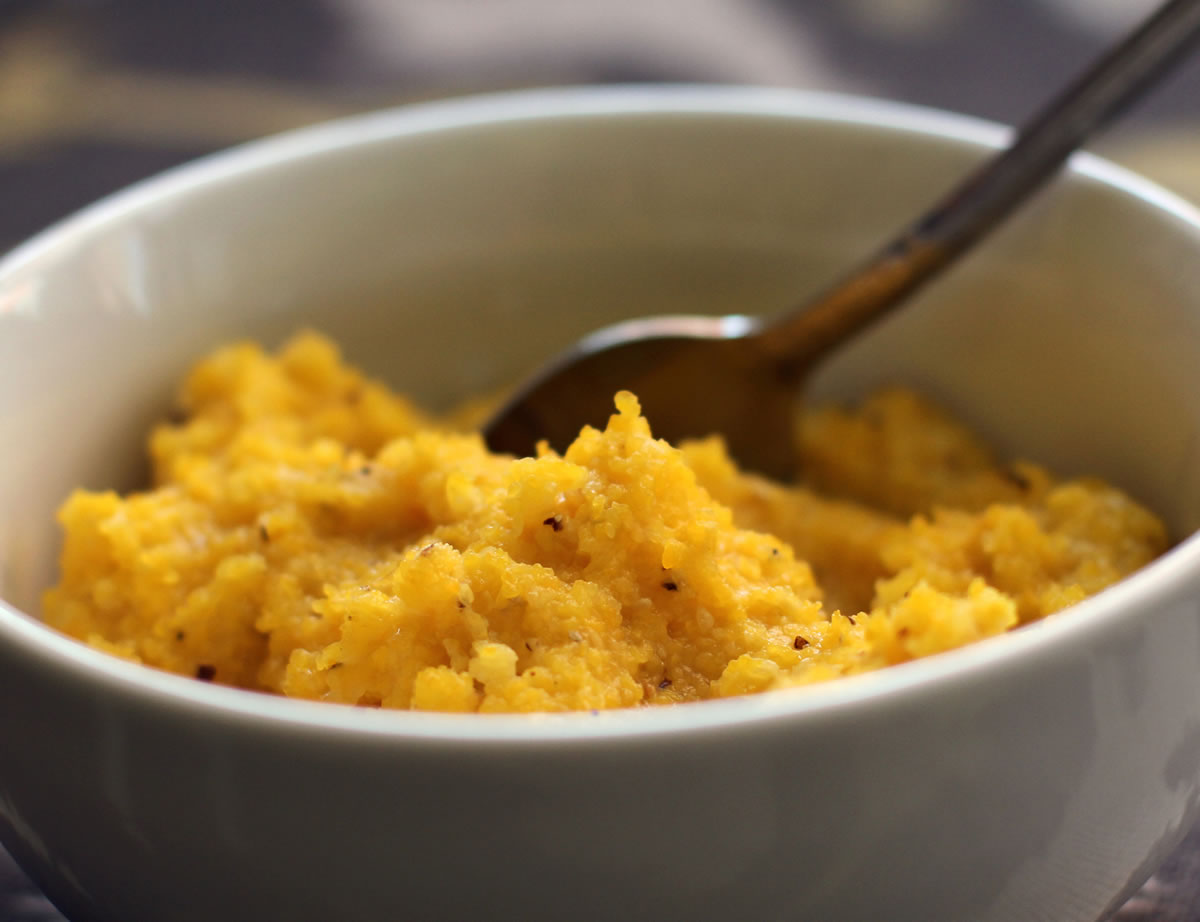“Polenta — I May Be Doing it Wrong.” This was the subject line of an email we received a couple of months ago, from a reader who wanted to know why her cornmeal porridge always “seems to turn out bland and somewhat uninteresting.” “I’ve tried a couple different preparations so far (sliced and baked, mush under stew),” the reader explained, “but I’m just not a fan.”
This is understandable. Polenta does not inspire superfandom in most people. (One prominent exception: Aziz Ansari.) That’s partly because its flavor is miles away from that of its essential ingredient: corn. Most polenta retains only a whisper of the sweet, tangy, summer-fresh deliciousness of that wonderful vegetable. The process that turns fresh corn into coarse cornmeal is, in its effects, roughly equivalent to whatever it is that turned Tom Waits’ 1973 voice into Tom Waits’ 2013 voice. On the taste buds, polenta barely registers as a corn product, whether you serve it as mush or try to enliven it with baking, frying, or grilling.
There is a solution to the blandness problem, and I’m sorry (but only a little bit sorry) to say that the solution requires a specialty ingredient: freeze-dried corn powder.
You can make it yourself by purchasing freeze-dried corn kernels and pulverizing them in a food processor or coffee grinder. Freeze-dried corn powder infuses polenta with unmistakable, mouthwatering, sweet-corn flavor without affecting its soft, creamy texture one bit. (It also intensifies polenta’s yellow color, a pleasant side effect.)



